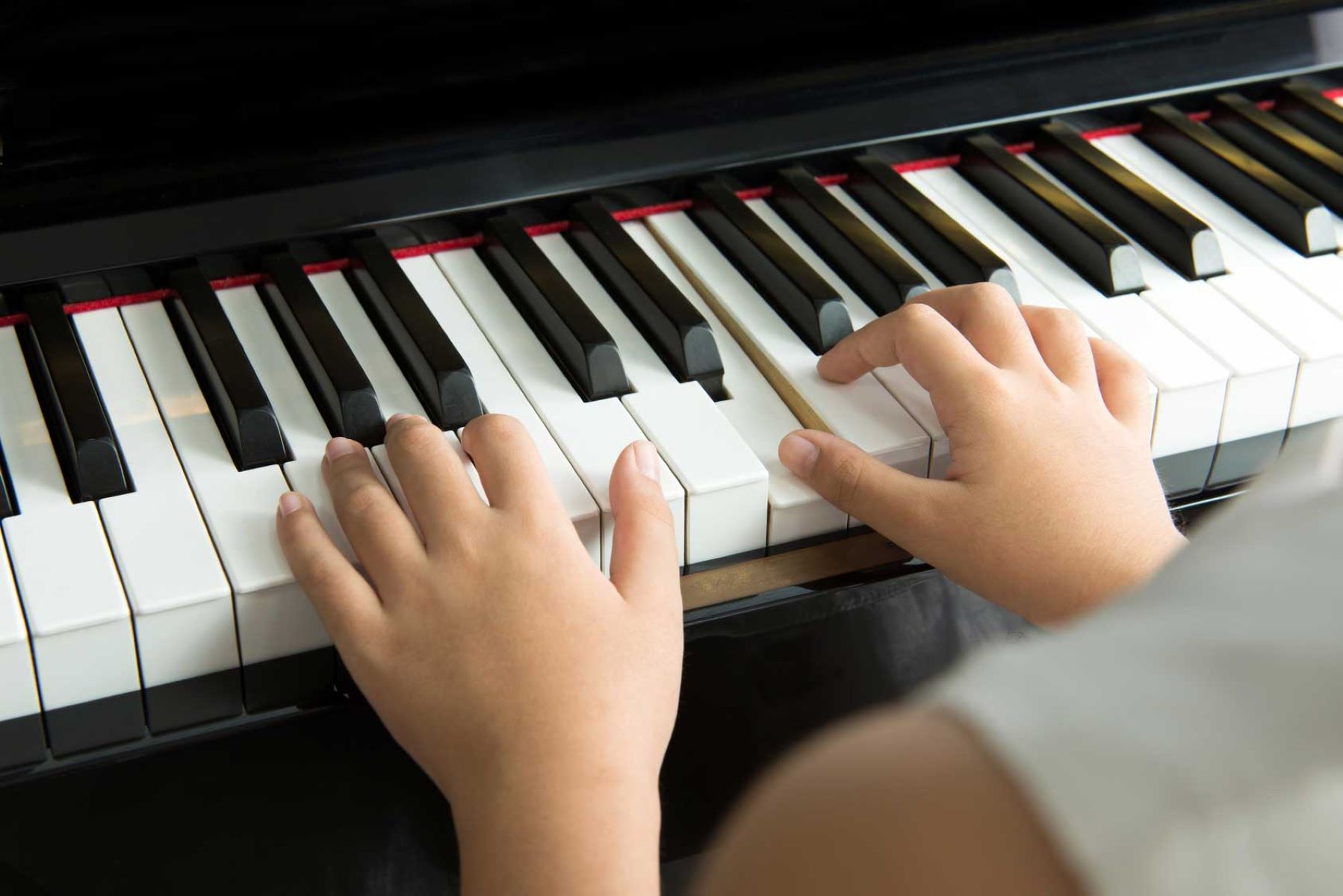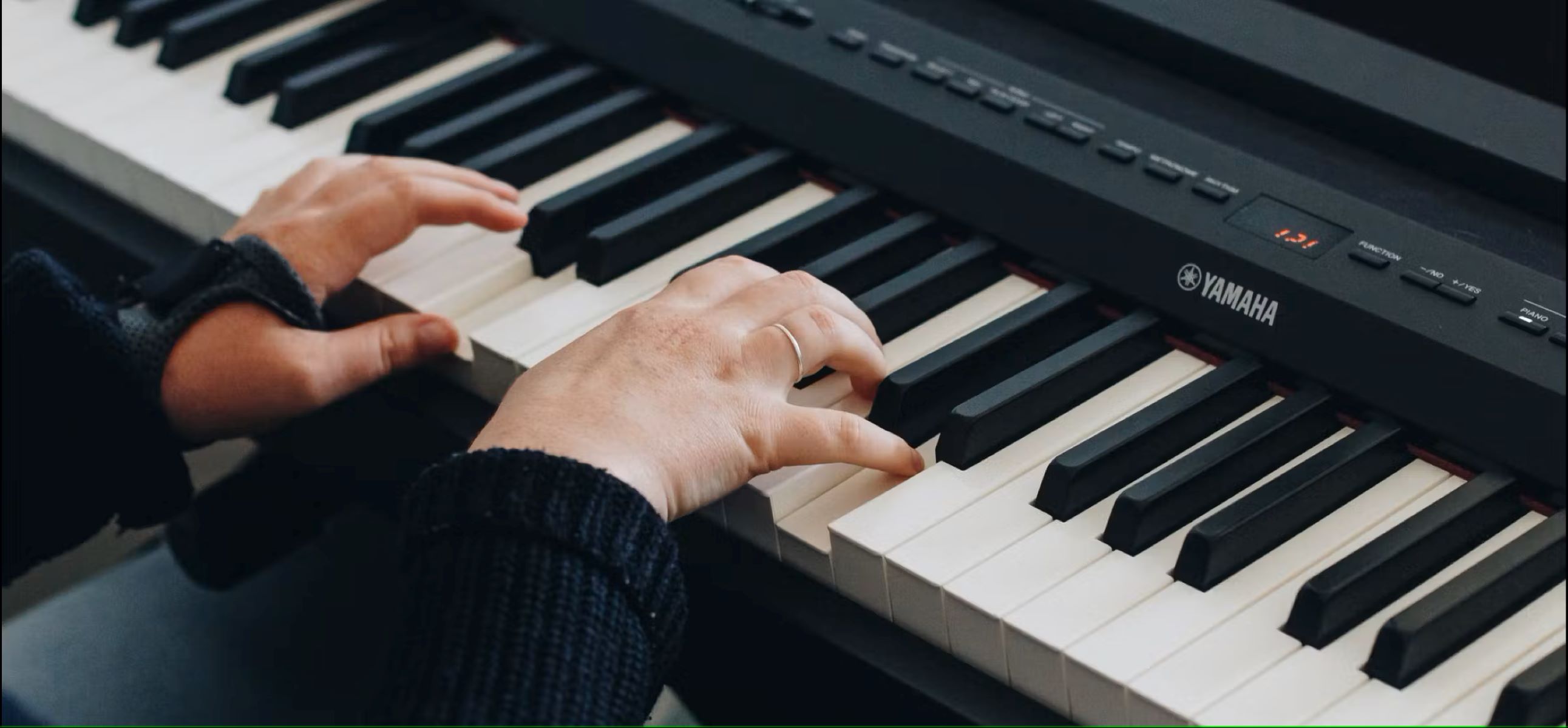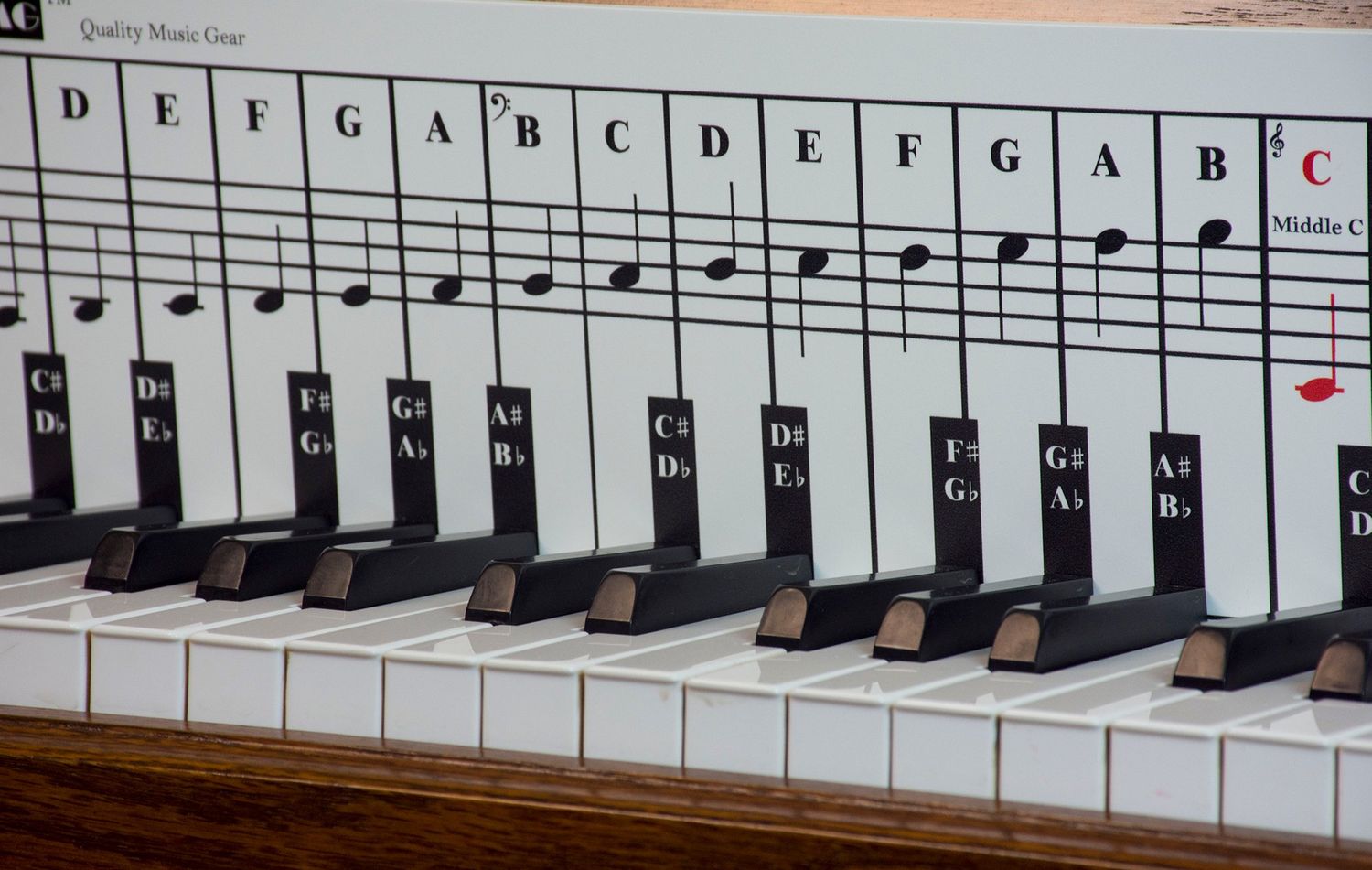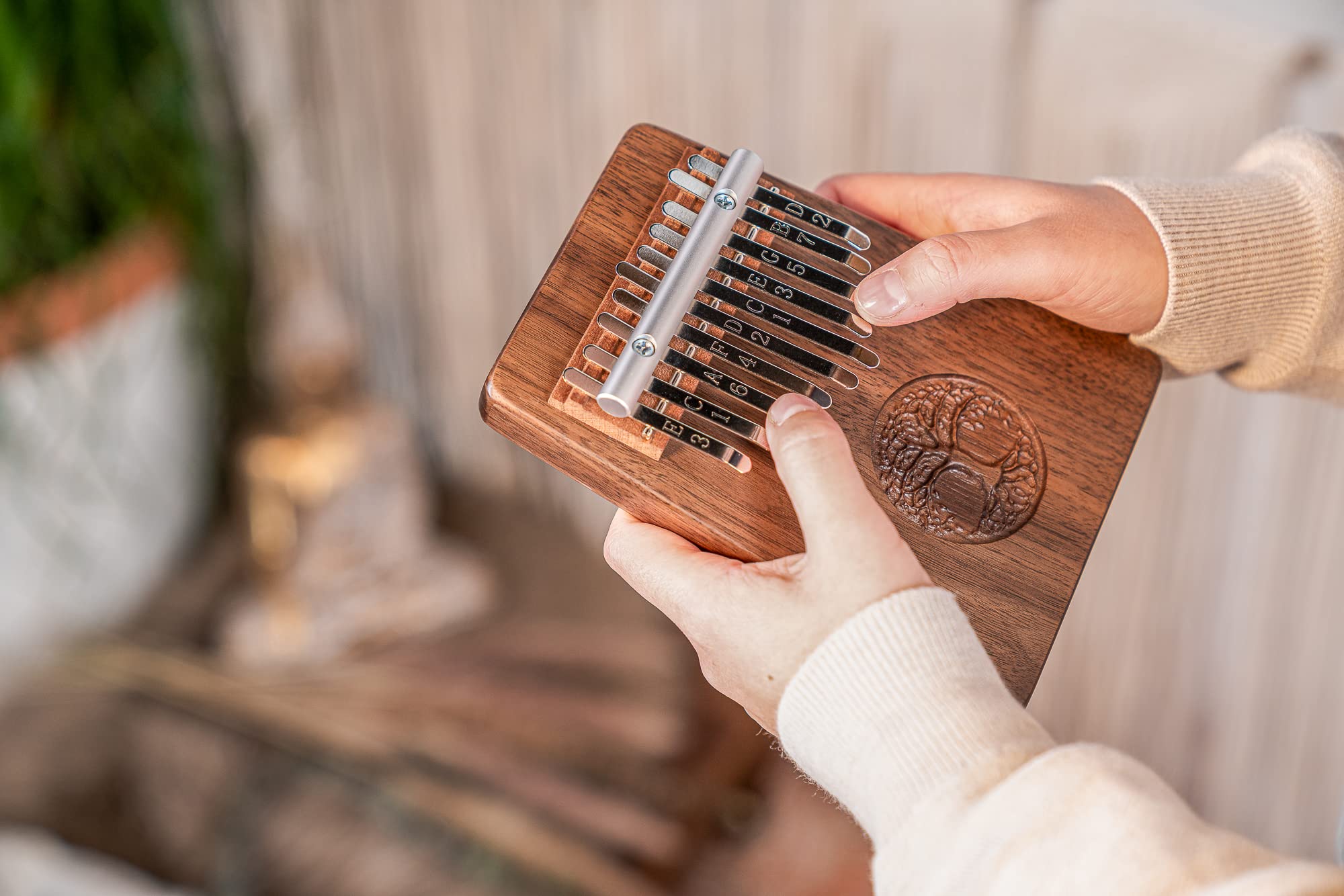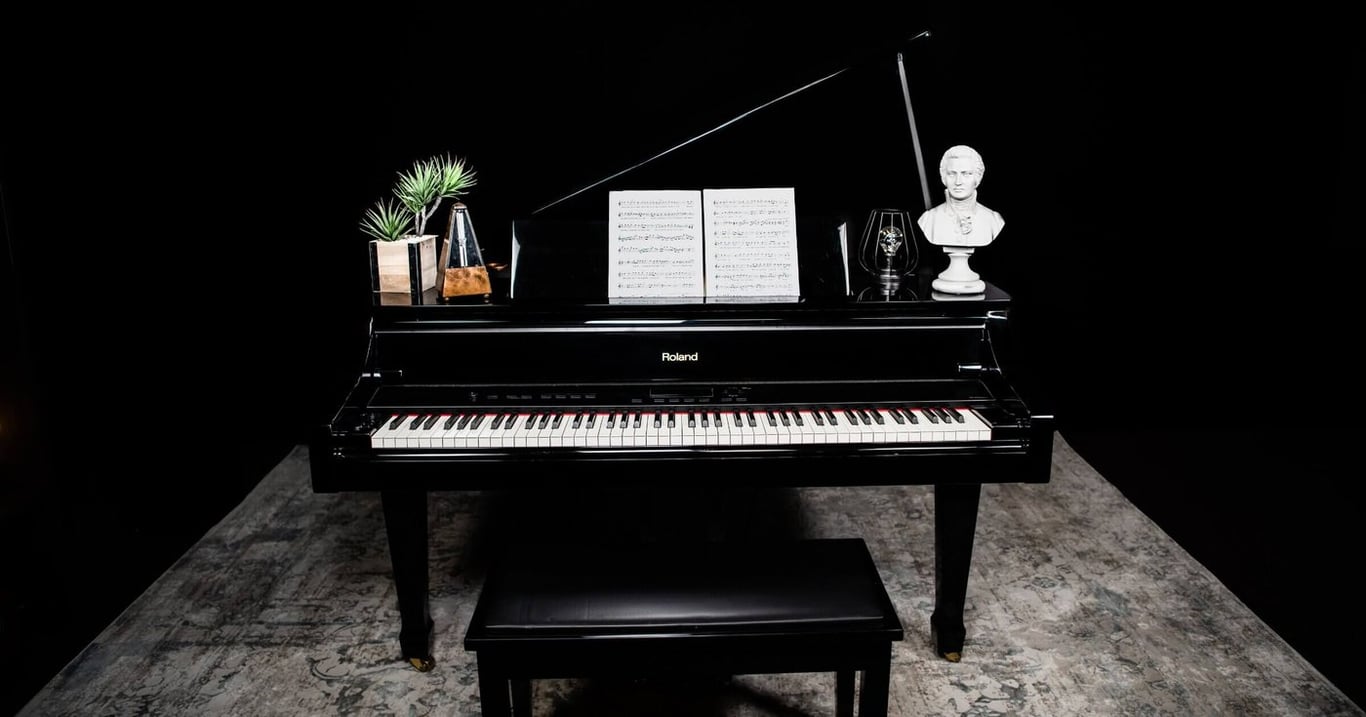

Classical
How To Play Classical Piano
Modified: February 11, 2024
Learn how to play classical piano with expert tips and tutorials. Master the timeless melodies and techniques of classical music.
(Many of the links in this article redirect to a specific reviewed product. Your purchase of these products through affiliate links helps to generate commission for AudioLover.com, at no extra cost. Learn more)
Table of Contents
- Introduction
- Getting Started
- Establishing Proper Hand Position
- Understanding Musical Notation
- Mastering Scales and Arpeggios
- Learning Finger Exercises
- Studying Classical Piano Repertoire
- Developing a Sense of Artistic Expression
- Practicing Sight-Reading
- Tips for Memorizing Pieces
- Mastering Technical Challenges
- Cultivating Dynamic Control
- Understanding Pedaling Techniques
- Interpreting Classical Music Styles
- Collaborating with Other Musicians
- Overcoming Performance Anxiety
- Conclusion
Introduction
Welcome to the world of classical piano! Whether you’re a beginner or an experienced pianist looking to explore the depths of classical music, this article will guide you on your journey to becoming a proficient classical pianist. Classical music is a beautiful and intricate art form that has captivated audiences for centuries. From the works of renowned composers such as Bach, Mozart, and Beethoven, to the stunning virtuosity of pianists like Liszt and Chopin, classical piano offers a wealth of musical treasures waiting to be discovered.
Playing classical piano is not only a rewarding and fulfilling endeavor, but it also provides a solid foundation for musicians in various genres. The skills and techniques developed through classical piano training can be applied to other musical styles, allowing for greater versatility and musicality.
This article will provide you with a step-by-step approach to mastering classical piano. We will cover everything from establishing proper hand position and understanding musical notation, to tackling scales and arpeggios, studying finger exercises, and exploring the vast realm of classical piano repertoire. We will also delve into the concepts of artistic expression, sight-reading, memorization techniques, and overcoming performance anxiety.
So, whether you dream of performing in grand concert halls or simply wish to expand your musical horizons, let’s embark on this enchanting musical journey together. Get ready to immerse yourself in the beauty, complexity, and sheer joy of playing classical piano!
Getting Started
Before diving into the world of classical piano, it’s important to ensure that you have the necessary resources and mindset to begin your musical journey. Here are some steps to help you get started:
- Acquire a Piano or Keyboard: To practice classical piano, you’ll need access to an acoustic piano or a digital keyboard with weighted keys. While an acoustic piano offers a more authentic playing experience, a keyboard can be a more affordable and convenient option for beginners.
- Find a Qualified Teacher: Having guidance from a qualified piano teacher is crucial for your progress. They can teach you proper technique, help you understand musical concepts, and keep you motivated. Look for teachers who specialize in classical piano and have a wealth of experience.
- Set Goals: Determine what you want to achieve on your classical piano journey. Whether it’s mastering a specific piece, improving your technical skills, or learning to express yourself through music, setting goals will provide direction and motivation throughout your practice sessions.
- Create a Practice Routine: Consistency is key when learning any instrument. Develop a practice schedule that suits your lifestyle and stick to it. Aim for regular practice sessions of at least 30 minutes to an hour, focusing on different aspects of piano playing such as scales, exercises, and repertoire.
- Invest Time in Warm-up Exercises: Before diving into playing pieces, warm-up exercises are essential to prepare your fingers, wrists, and arms for playing. This includes gentle stretching, finger exercises, and playing simple technical patterns to improve dexterity and prevent injuries.
- Stay Patient and Persistent: Learning classical piano requires time and dedication. Be patient with yourself as you progress and don’t get discouraged by challenges. Stay persistent and celebrate small victories along the way.
By taking these initial steps, you’ll be well on your way to embarking on a fulfilling classical piano journey. Stay committed to your practice, remain open to learning, and embrace the joy of making music. Now, let’s move on to establishing proper hand position to lay the foundation for your piano technique.
Establishing Proper Hand Position
Developing a correct hand position is crucial for playing classical piano with ease and efficiency. It allows for better control, precision, and reduces the risk of injury. Here are some key points to consider when establishing proper hand position:
- Hand Placement: Place your hands on the piano keys with your fingers slightly curved, as if you’re holding a small ball. The weight of your arms should rest on your fingertips, allowing your wrists to be relaxed and slightly lower than the level of the keys.
- Thumb Placement: The thumb plays a crucial role in piano playing. Keep your thumbs relaxed and slightly curved. Avoid tucking them under your hand or pressing them firmly on the keys.
- Finger Alignment: Position your fingers over the keys, aligning them in a natural arc. This means that your knuckles should be slightly higher than your fingertips. Ensure that all fingers are ready to press the keys independently without any tension.
- Arm and Wrist Alignment: Maintain a relaxed and natural position for your arms and wrists. Your wrists should be slightly lower than the level of the keys, allowing your hands to move freely. Avoid unnecessary tension in your arms, shoulders, and wrists.
- Relaxation: One of the key principles in proper hand position is relaxation. Avoid excessive tension in your hands, fingers, and wrists. Cultivate a sense of ease and fluidity in your movements, allowing for more expressive and controlled playing.
Remember, practicing proper hand position may feel unfamiliar at first, but with consistent practice, it will become natural. Start with simple exercises that focus on finger placement and hand position, gradually incorporating them into your practice routine.
Working with a knowledgeable piano teacher can greatly help in refining your hand position. They can provide guidance, corrections, and exercises tailored to your specific needs. Take the time to develop a solid foundation in hand position, as it will set the stage for your future progress as a classical pianist.
Now that you have established the proper hand position, let’s dive into understanding the musical notation to further enhance your piano skills.
Understanding Musical Notation
When learning to play classical piano, it is essential to have a good understanding of musical notation. Musical notation is a system of symbols that represent pitch, rhythm, dynamics, and various musical elements. Here are the key components of musical notation that every pianist should be familiar with:
- Staff: The staff consists of five horizontal lines and four spaces. Notes are placed on the lines and spaces to represent different pitch levels. The higher a note is placed on the staff, the higher its pitch.
- Treble and Bass Clef: The treble clef, also known as the G clef, is commonly used to notate higher-pitched notes played by the right hand. The bass clef, or F clef, represents lower-pitched notes played by the left hand. Learning to read both clefs is essential for playing piano music that involves both hands.
- Notes: Notes are oval-shaped symbols placed on the staff to represent specific pitches. Different note shapes, such as whole notes, half notes, quarter notes, and eighth notes, indicate the duration or length of time the note is played.
- Rests: Rests indicate periods of silence in the music. Like notes, rests come in various shapes and durations, representing different lengths of silence.
- Key Signatures: Key signatures indicate the key of the music, representing the set of notes and their relationships within a piece. Key signatures are shown at the beginning of a piece and are indicated by sharps (#) or flats (b).
- Dynamics: Dynamics are symbols that indicate the volume or intensity of the music. Common dynamic markings include pianissimo (pp), piano (p), mezzo forte (mf), forte (f), and fortissimo (ff).
- Articulations: Articulations are symbols that indicate how a note is to be played, such as staccato (short and detached), legato (smooth and connected), or accents (added emphasis).
- Phrasing: Phrasing symbols, such as slurs and phrase marks, indicate the grouping of notes and musical phrases. They help to interpret the music and convey the intended expression.
- Repeats: Repeat signs indicate sections of music that are to be repeated, either immediately or later in the piece. Knowing how to read and follow repeat signs is essential for understanding the structure of a piece.
Understanding and interpreting musical notation is a skill that can be developed with practice. Start by familiarizing yourself with the basic symbols and gradually progress to more complex pieces. Working through exercises and sight-reading music can greatly improve your ability to read and understand musical notation.
Additionally, there are numerous online resources, books, and piano method books available that provide in-depth explanations of musical notation. Take advantage of these resources and continue to build your knowledge and understanding of musical notation as you progress in your classical piano journey.
Now that you have a solid foundation in hand position and musical notation, let’s move on to mastering scales and arpeggios, which are fundamental building blocks of piano technique.
Mastering Scales and Arpeggios
When it comes to developing technical proficiency on the piano, mastering scales and arpeggios is essential. Scales and arpeggios provide a foundation for understanding key signatures, finger coordination, and hand independence. Here’s how you can approach mastering scales and arpeggios:
- Start with Major and Minor Scales: Begin by learning and practicing major and minor scales in all keys. Major scales are the most common and provide the basis for understanding key signatures. Minor scales, both natural and harmonic, are equally important and help develop finger dexterity and melodic awareness.
- Focus on Hand and Finger Placement: Pay attention to your hand and finger placement while playing scales. Keep your wrists relaxed, and aim for a smooth and even sound across all the notes. Start with a slow tempo and gradually increase the speed as you gain comfort and accuracy.
- Practice Hands Separately and Together: Initially, practice scales and arpeggios hands separately to build familiarity and confidence. Once you feel comfortable, gradually merge both hands and work on synchronization. Remember to maintain a balanced sound between the hands.
- Incorporate Different Rhythmic Patterns: To enhance your technical skills, vary the rhythmic patterns while practicing scales and arpeggios. Play them in triplets, in different syncopated rhythms, or with accents to improve your coordination and rhythmic precision.
- Explore Different Articulations: Experiment with different articulations to add musicality and expression to your scales and arpeggios. Practice legato (smooth and connected), staccato (short and detached), and accents to develop control and dynamic range.
- Gradually Increase Difficulty: Once you feel confident with the basic scales and arpeggios, challenge yourself by exploring more advanced variations. This can include playing scales in double octaves, contrary motion, or in thirds and sixths. Pushing the boundaries of your technical abilities will help you grow as a pianist.
- Apply Scales and Arpeggios to Repertoire: As you progress, apply your scale and arpeggio knowledge to pieces from the classical repertoire. Many classical compositions incorporate scale passages and arpeggios, so practicing them separately will provide a solid foundation for tackling these sections within larger musical contexts.
Remember to practice scales and arpeggios consistently. Dedicate a portion of your practice sessions to developing technical proficiency, but also make sure to balance it with musical expression and interpretation. By mastering scales and arpeggios, you will improve your finger agility, hand coordination, and overall piano technique, enabling you to navigate complex classical pieces with greater ease.
Now that you have honed your technical skills, it’s time to explore exercises specifically designed to strengthen your fingers and improve your dexterity.
Learning Finger Exercises
Building strength, flexibility, and control in your fingers is crucial for playing classical piano. Finger exercises are designed to develop specific techniques, improve coordination, and increase finger independence. Here are some key points to consider when learning and practicing finger exercises:
- Warm Up: Before diving into finger exercises, warm up your hands and fingers with gentle stretches and relaxation exercises. This helps to prevent injuries and prepares your fingers for more intense practice.
- Start Slowly: Begin with slow and controlled movements. Focus on accuracy and proper finger placement. Gradually increase the speed as you become more comfortable and confident.
- Focus on Finger Independence: Finger exercises are designed to improve finger independence, allowing each finger to move independently of the others. Practice exercises that target individual fingers or combinations of fingers to develop strength and coordination.
- Vary the Dynamics: Experiment with different dynamics while practicing finger exercises. Practice them softly (piano) and gradually increase the volume (forte) to develop dynamic control and finger strength.
- Explore Different Patterns: Finger exercises come in various patterns and combinations. Practice scales, arpeggios, chromatic patterns, and thirds to challenge your fingers and improve your technical abilities.
- Utilize Hanon Exercises: Hanon exercises are a popular exercise collection specifically designed for pianists. They focus on finger strength, agility, and independence. Incorporate Hanon exercises into your practice routine to enhance your technical skills.
- Combine Finger Exercises with Music: While finger exercises are important, don’t forget to apply them to actual music. Explore repertoire that features challenging finger passages and incorporate them into your practice sessions. This will help you connect technical exercises with musical expression.
- Listen to Your Body: Pay attention to any discomfort or strain in your hands and fingers. If you experience pain or tension, take a break and gently stretch your fingers. It’s important to avoid overworking your hands to prevent injuries.
Consistency is key when practicing finger exercises. Dedicate regular time in your practice routine specifically for developing finger strength and dexterity. As you progress, you will notice an improvement in your finger agility, control, and overall piano technique.
Remember to approach finger exercises with patience and perseverance. Don’t rush the process and be mindful of your progress. Celebrate small victories along the way, and most importantly, enjoy the journey of discovering the potential of your fingers on the piano.
Now that you’ve mastered finger exercises, let’s move on to studying classical piano repertoire to expand your musical horizons.
Studying Classical Piano Repertoire
Studying classical piano repertoire is a pivotal part of becoming a well-rounded pianist. It allows you to explore the rich history of classical music, develop your interpretive skills, and experience the joy of performing masterpieces by renowned composers. Here are some key aspects to consider when studying classical piano repertoire:
- Start with Beginner-Level Pieces: If you’re a beginner, begin by selecting repertoire that aligns with your current skill level. Look for pieces specifically composed for beginners or those marked with a difficulty level suitable for your stage of playing. This will help you develop a strong foundation and build confidence.
- Gradually Increase Difficulty: As you progress, gradually challenge yourself with more difficult repertoire. Explore different musical periods, from Baroque to Romantic and beyond, to broaden your understanding of classical music styles. Select pieces that introduce new technical elements and musical concepts to expand your musical horizons.
- Study the Composer: Take the time to research the composer behind the piece you’re learning. Understanding the historical context, the composer’s intentions, and their unique style will deepen your interpretation and enhance your performance.
- Analyze the Piece: Analyze the structure, form, and harmonic progression of the piece. Break it down into smaller sections to study the musical themes and motifs. This analysis will provide a roadmap for learning and interpreting the piece more effectively.
- Focus on Musical Expression: Classical piano repertoire offers a wide range of emotions and musical expression. Consider the dynamics, articulations, and phrasing indicated in the score. Experiment with different interpretations and bring your own musical voice to the piece while remaining true to the composer’s intentions.
- Practice Efficiently: Practice sections of the piece separately, focusing on challenging passages or technical elements. Use slow practice, hands separately, and rhythmic variations to improve accuracy and develop muscle memory. Gradually merge sections and incorporate musicality as you become more comfortable.
- Seek Guidance: Working with a knowledgeable piano teacher or mentor is invaluable when studying classical piano repertoire. They can provide guidance on interpretation, suggest practice strategies, and help you refine your performance. Take advantage of their expertise to enhance your musical growth.
- Perform and Seek Feedback: Performing classical repertoire in front of an audience is an important step in your musical development. Seek opportunities to perform at recitals or gatherings and collect feedback from your peers, teachers, or experienced musicians. Embrace constructive criticism as it will help you improve and grow as a performer.
Remember, studying classical piano repertoire is not just about mastering notes and technical proficiency; it’s about bringing life to the music and conveying emotions to the audience. Rejoice in the beauty and depth of classical compositions and embrace the meaningful connection that music creates.
Now that you have a solid foundation in classical piano repertoire, let’s explore how to develop a sense of artistic expression to bring your performances to life.
Developing a Sense of Artistic Expression
Developing a sense of artistic expression is crucial for elevating your classical piano performances from mere technical exercises to captivating musical experiences. It involves infusing your playing with emotion, intention, and personal interpretation. Here are some essential tips to help you develop a sense of artistic expression:
- Understand the Composer’s Intentions: Dive deep into the historical context, biography, and artistic style of the composer. Study their life, influences, and musical aesthetic to gain insights into their intentions behind the piece. This understanding will guide your interpretation and help you bring out the essence of the composition.
- Interpret the Score: Analyze the musical notation in the score, including dynamics, articulations, tempo indications, and phrasing marks. Use these markings as a starting point for shaping your interpretation, but don’t be afraid to add your own musical nuances and nuances.
- Explore Interpretive Choices: Experiment with different tempos, dynamics, and articulations to find the expressive qualities that resonate with you. Feel free to experiment and make interpretive choices that align with your artistic vision while staying true to the character of the piece.
- Emphasize Musical Line and Phrasing: Pay attention to the flow of the music and highlight the phrases and musical lines. Connect the notes seamlessly and shape the phrases with sensitivity and musicality. Think of the music as a conversation, with each phrase having its own natural rise and fall.
- Use Dynamics and Expression: Dynamic variations play a crucial role in conveying emotion and adding depth to your performance. Experiment with a wide range of dynamics, from delicate pianissimos to powerful fortissimos, to express the contrasting emotions of the piece.
- Focus on Tone and Timbre: Explore the tonal qualities of the piano and experiment with different touches to achieve the desired timbre. Use the pedals to create beautiful sustained tones or create a delicate and transparent texture. Each piece has its own unique tonal colors, and finding the right combination is key to artistic expression.
- Connect Emotionally with the Music: Allow yourself to be moved emotionally by the music you are playing. Cultivate a deep connection with the composition, and let that emotional connectivity speak through your performance. By experiencing and transmitting the emotions of the music, you invite the audience to share in the journey.
- Continuously Refine Your Interpretation: Artistic expression is an ongoing process that evolves with time and experience. Embrace feedback from mentors, teachers, and fellow musicians to refine your interpretation and deepen your understanding of the music. Stay open to new ideas and interpretations as you grow as a musician.
Remember that artistic expression is deeply personal and should reflect your individuality as a pianist. Embrace your unique artistic voice and bring your own interpretation and emotions to the music. Strive to create a profound and meaningful connection with your audience through your expressive playing.
Now that you have an understanding of artistic expression, let’s explore the skill of sight-reading, which is essential for expanding your repertoire and exploring new musical pieces.
Practicing Sight-Reading
Sight-reading is the ability to read and play a piece of music on the spot, without prior practice or familiarity. It is an essential skill for any pianist, as it allows you to explore new repertoire, accompany other musicians, and expand your musical horizons. Here are some tips to help you practice sight-reading effectively:
- Start with Easy Pieces: Begin sight-reading practice with simpler pieces that correspond to your skill level. Gradually increase the difficulty as you become more comfortable and confident.
- Scan the Score: Before playing, take a quick glance at the score to familiarize yourself with the key signature, time signature, tempo markings, and any other important elements. This will give you a general idea of what to expect in the music.
- Observe the Rhythm: Pay close attention to the rhythm and time values of the notes. Practice subdividing the beats in your mind and count aloud if necessary. Developing a strong sense of rhythm will help you navigate through the music more accurately.
- Focus on the Melody and Accompaniment: Identify the main melody and accompanying parts in the music. Concentrate on bringing out the melody primarily while maintaining a supportive accompaniment. This will help create a well-rounded interpretation even when sight-reading.
- Use Proper Fingerings: Although sight-reading may not allow for extensive planning, try to use logical and comfortable fingerings. This will enhance your accuracy and help you navigate through the music smoothly.
- Keep a Steady Tempo: Maintain a steady tempo throughout your sight-reading. Resist the temptation to slow down or stop if you make mistakes. Focus on continuity and keeping the music flowing.
- Anticipate Patterns: Look out for common patterns, chord progressions, and musical motifs within the piece. This will help you anticipate upcoming notes and make the sight-reading process more fluid.
- Practice Regularly: Dedicate regular practice sessions to sight-reading. Set aside time to work on sight-reading exercises or grab unfamiliar music to challenge yourself. The more you practice sight-reading, the better you will become at quickly recognizing patterns and playing with fluency.
- Record and Review: Record yourself while sight-reading and listen back to evaluate your performance. Identify areas that need improvement, such as rhythmic accuracy, dynamics, and phrasing. Incorporate these observations into your future sight-reading practice.
Remember, sight-reading is a skill that improves with practice over time. Be patient with yourself as you develop this ability. Gradually, you’ll find that you become more comfortable and confident in sight-reading various musical pieces.
Now that you have honed your sight-reading skills, let’s explore techniques and tips for memorizing pieces to enhance your performance abilities.
Tips for Memorizing Pieces
Memorizing a piece is a valuable skill that allows you to perform with confidence and freedom, without relying on sheet music. While the process of memorization may seem daunting, there are effective techniques that can help you internalize the music and commit it to memory. Here are some tips to aid you in memorizing pieces:
- Break It Down: Begin by breaking the piece into smaller sections, such as phrases or musical ideas. Work on memorizing these smaller chunks individually before moving on to larger sections. This will make the process more manageable.
- Analyze the Musical Structure: Analyze the structure, form, and harmonic progression of the piece. Understand how the different sections relate to one another and identify recurring themes or motifs. This analysis will help you make logical connections and aid in memory retention.
- Use Chunking and Repetition: Memorize small segments at a time and repeat them until they become ingrained in your muscle memory. Gradually link these segments together, always reviewing previously memorized parts as you progress through the piece.
- Visualize the Score: Close your eyes and visualize the score in your mind. Imagine yourself playing the piece, including the fingerings, dynamics, and expression. This mental practice reinforces your memory and strengthens your connection to the music.
- Practice Away from the Piano: Away from the piano, mentally go through the piece, visualizing the movements and hearing the music in your mind. This practice helps solidify your memory and allows you to focus on the structure and musicality of the piece.
- Practice Hands Separately: Memorize each hand’s part separately before combining them. This approach allows you to pay closer attention to the intricacies of each hand’s movements, making it easier to identify note patterns and intervals.
- Focus on Patterns and Landmarks: Pay attention to patterns, recurring melodic or rhythmic sequences, and important landmarks within the piece. These landmarks act as anchoring points in your memory, helping you navigate through the music.
- Utilize Muscle Memory: Develop muscle memory by practicing technical passages and challenging sections slowly and deliberately. Gradually increase the speed while ensuring accuracy and precision. Muscle memory will provide reliability and confidence during performances.
- Perform Regularly: Regularly perform the memorized piece in front of others or in informal settings. Performing publicly challenges your memory and helps solidify it further. It also exposes any weak spots that require additional practice.
- Continuous Review: Even after fully memorizing a piece, continue to review and practice it regularly. Memory can fade over time, so consistent refreshers will help maintain your proficiency.
Remember, effective memorization requires patience, persistence, and regular practice. Everyone’s learning process is unique, so experiment with different techniques to find what works best for you. With dedication and effort, you can confidently perform your memorized pieces with artistry and flair.
Now that you have tips for memorizing pieces, let’s explore techniques to overcome technical challenges and develop a mastery of difficult passages.
Mastering Technical Challenges
As a classical pianist, you will encounter various technical challenges in your repertoire. These challenges may include fast passages, intricate fingerings, complex rhythms, and difficult hand coordination. Mastering these technical hurdles requires focused practice and specific techniques. Here are some tips to help you overcome and master technical challenges:
- Break It Down: Break down the challenging passages into smaller sections. Practice tackling them at a slower tempo, focusing on accuracy and coordination. Gradually increase the speed as you gain control and confidence.
- Isolate Problem Areas: Identify specific areas within the challenging passage that require extra attention. Isolate those measures or phrases and practice them separately to address any technical shortcomings.
- Use Metronome and Gradual Tempo Increase: Utilize a metronome to keep a steady tempo while practicing difficult passages. Start at a comfortable tempo and gradually increase the speed in small increments. This systematic approach helps build muscle memory and improves coordination.
- Experiment with Fingerings: Explore different fingerings to find the most efficient and comfortable ones for each challenging passage. Analyze the patterns and consider the most logical fingerings that allow for smooth and fluid execution.
- Practice Hands Separately: Break down complex passages and practice each hand separately to focus on specific technical challenges. Once you feel comfortable with each hand’s part, gradually merge them together, paying attention to synchronization and balance.
- Slow Practice with Attention to Detail: Practice challenging passages at a slow tempo, paying close attention to every note, fingering, and rhythm. Ensure precision and accuracy before gradually increasing the speed.
- Utilize Practice Techniques: Apply practice techniques such as staccato, legato, and varied articulations to develop control and precision. Experiment with different dynamics and accents to bring out the musical nuances in the challenging passages.
- Plan Practice Sessions: Dedicate focused practice sessions solely to technical challenges. Designate specific time slots to work on difficult passages to ensure consistent and targeted improvement.
- Seek Guidance: Consult with a teacher or mentor who can provide guidance on tackling technical challenges. They can offer valuable insights, suggest practice strategies, and help you overcome specific hurdles.
- Record and Evaluate: Record yourself practicing or performing the challenging passages and listen back to identify areas that require improvement. Analyze your recordings for timing accuracy, clarity, and overall execution.
Remember, mastering technical challenges requires patience, perseverance, and deliberate practice. Approach each challenge with a positive mindset and embrace the opportunity to grow as a pianist. With consistent and focused effort, you can conquer even the most daunting technical hurdles in your repertoire.
Now that you have gained insights into overcoming technical challenges, let’s explore the concept of dynamic control and how it enhances your performances.
Cultivating Dynamic Control
Dynamic control is a crucial element of musical expression that brings life and depth to your piano performances. It involves the ability to create a wide range of volume and intensity, adding excitement, contrast, and emotional depth to your playing. Here are some tips to help you cultivate dynamic control at the piano:
- Know the Markings: Familiarize yourself with dynamic markings commonly used in musical notation such as pianissimo (pp), piano (p), mezzo piano (mp), mezzo forte (mf), forte (f), and fortissimo (ff). Understand their respective volume levels and practice playing passages at the indicated dynamic levels.
- Gradual and Controlled Changes: Practice transitioning smoothly and gradually between dynamic levels. Avoid sudden or abrupt volume changes that can disrupt the flow of the music. Pay attention to the nuances in volume and make deliberate choices to enhance the musical expression.
- Utilize the Full Range of the Piano: Explore the capabilities of your instrument by experimenting with soft, delicate pianissimo passages and powerful, resonating fortissimos. Practice creating a balanced sound across the entire range of the piano, paying attention to the tonal differences in different registers.
- Focus on Tone Quality: Dynamic control is not just about volume—it also involves shaping the tone and timbre of the notes. Experiment with different touch and articulation techniques to achieve the desired expressive qualities. Focus on creating a beautiful, rich tone even at the softest dynamic levels.
- Expressive Phrasing: Use dynamic changes to shape phrases and emphasize melodic lines. Gradually increase the volume leading up to climactic moments and soften during more delicate and introspective sections. Showcasing thoughtful dynamic phrasing adds depth and musicality to your interpretation.
- Intentional Use of Silence: Silence can be just as powerful as sound. Practice incorporating moments of silence, also known as rests, strategically within your playing. These pauses add contrast, tension, and anticipation, allowing the music to breathe and make a stronger impact on the listener.
- Listen to Recordings: Study recordings of renowned pianists and pay attention to how they utilize dynamic control. Observe their use of subtle variations in volume, the balance between the hands, and the overall tonal palette. Listening to different interpretations can inspire and inform your own artistic choices.
- Experiment and Explore: Don’t be afraid to experiment with different dynamic choices and take risks. Discover the expressive possibilities within the music and make it your own. Allow your intuition and musical instincts to guide you in creating unique and captivating performances.
- Perform and Refine: Dynamic control is best developed through performance. The act of playing in front of an audience challenges you to bring out the full expressive range of the music. Regularly perform in recitals, concerts, or even for friends and family to refine your dynamic control and receive valuable feedback.
Cultivating dynamic control is a continuous process that requires attentive listening, experimentation, and artistic exploration. With practice and a keen ear, you can bring out the emotive qualities of the music, captivating your audience and creating truly memorable performances.
Now that you understand the importance of dynamic control, let’s explore the techniques and subtleties of pedaling that can enhance your piano playing.
Understanding Pedaling Techniques
Pedaling is an essential tool for pianists to enhance the resonance, color, and overall musicality of their performances. It involves the use of the damper pedal, also known as the sustain pedal, to sustain or release the sound produced by the piano strings. Understanding and utilizing various pedaling techniques can significantly elevate your playing. Here are key points to consider:
- Basic Pedal Terminology: Familiarize yourself with fundamental pedal terminology. The most common terms include the sustain pedal (right pedal), the una corda pedal (left pedal), and the sostenuto pedal (middle pedal, found in some pianos).
- Sustain Pedal: The sustain pedal is used to lift the dampers off the strings, allowing the sound to ring and sustain. It is often used to create a legato effect, connect melodic lines, and enhance resonance. Practice using the sustain pedal to achieve a seamless and connected sound.
- Partial Pedaling: Partial pedaling involves lightly or partially depressing the sustain pedal to achieve varying degrees of sustain and resonance. This technique is useful for controlling the clarity of complex passages and creating a layering effect.
- Release Pedal Technique: The release pedal technique involves briefly lifting the sustain pedal to release any lingering harmonies or unwanted resonance. It is commonly employed at the ends of phrases or when changing harmonies. Practice precise and well-timed release pedal technique to maintain clarity and avoid muddiness.
- Half-Pedaling: Half-pedaling is a technique where the sustain pedal is depressed partially, allowing for a combination of sustained and dampened tones. This technique is particularly effective in achieving a delicate and nuanced touch, especially in more intimate and lyrical passages.
- Atmospheric and Special Effects: Experiment with pedaling techniques to create specific atmospheric effects. This includes using the pedal to create a shimmering or ethereal quality, imitate bells, or simulate the resonance of a large concert hall. Develop the ability to adapt your pedaling technique to suit the musical character and style of the piece.
- Balance and Clarity: Maintain a balance of sound and clarity while pedaling. Avoid excessive or indiscriminate pedal usage, as it can lead to a muddy or blurred sound. Ensure that the texture and individual lines within the music remain clear, even when using the sustain pedal.
- Listening and Experimentation: Cultivate a keen ear by actively listening to the effect of your pedaling. Experiment with different pedal durations, releases, and combinations to achieve your desired sound. Pay attention to the overall balance of the piano and make adjustments as necessary.
- Score Study: Study the score closely to identify indications for pedal changes and usage provided by the composer. Look for pedal markings, specific instructions, or written indications for pedal changes. These markings provide valuable guidance for interpreting the intentions of the composer.
- Guidance from Teachers and Professional Pianists: Seek guidance from experienced piano teachers or professional pianists to refine your pedaling technique. They can provide valuable insights, specific suggestions, and demonstrations to help you master the subtleties of pedaling.
Remember, pedaling is a nuanced and personal aspect of piano playing. Continual practice, exploration, and attentive listening will help you develop a refined and sensitive approach to pedaling. With careful attention to pedal technique, you can enhance the expressiveness, resonance, and overall artistry of your piano performances.
Now that you have a better understanding of pedaling techniques, let’s delve into interpreting different classical music styles to bring authenticity and depth to your performances.
Interpreting Classical Music Styles
Interpreting classical music styles is a fundamental aspect of bringing depth, authenticity, and historical context to your piano performances. Each musical period, from Baroque to Classical to Romantic and beyond, has unique characteristics and stylistic elements that shape its compositions. Here are some tips to help you interpret different classical music styles:
- Historical Context: Study the historical and cultural background of the piece or musical period you are playing. Understand the conventions, influences, and social context of the time, as they greatly influenced the musical style and approach.
- Baroque Style: In Baroque music, focus on clarity, ornamentation, and the varied use of counterpoint. Pay attention to the distinction between the melody and accompanying voices, and emphasize the rhythmic vitality and precision. Experiment with ornamentation techniques, such as trills, mordents, and turns, to enhance the expressive qualities of the music.
- Classical Style: Classical music emphasizes structure, balance, and clarity. Strive for a balanced and transparent sound, paying attention to phrase structure and symmetry. Focus on bringing out the contrasts between sections and dynamics, highlighting the classical composers’ intent for clarity and formal elegance.
- Romantic Style: Romantic music is characterized by its emotional intensity, expressive freedom, and rich harmonic language. Place emphasis on interpretive freedom and individual expression. Explore the use of rubato, flexible tempos, and dynamic contrasts to convey the emotional depth and lyricism of the Romantic era.
- Impressionistic Style: Impressionistic music aims to evoke moods and impressions through delicate textures and harmonies. Focus on creating a dreamlike atmosphere, using pedal effects, subtle rubato, and impressionistic tonal colors. Pay attention to nuanced dynamics and the interplay between melody and the surrounding harmonies to capture the essence of impressionistic music.
- 20th Century and Contemporary Styles: Contemporary music encompasses a wide range of styles and techniques, often pushing the boundaries of traditional tonality. Embrace experimentation, boldness, and non-traditional sounds. Understand the specific techniques and extended piano techniques used in contemporary compositions and bring out the intended effects through careful interpretation.
- Study Performances by Renowned Pianists: Listen to recordings and study performances by renowned pianists who specialize in interpreting specific composers or periods. Observe their stylistic choices, their approach to ornamentation, phrasing, and dynamics, and how they bring out the distinct qualities of each musical style.
- Balance Tradition and Personal Expression: While it’s essential to understand the stylistic conventions of each musical period, don’t be afraid to infuse your performances with your own musical personality and interpretation. Strike a balance between honoring the composer’s intentions and expressing your individual artistic voice.
- Score Study: Analyze the score for specific indications, markings, and compositional techniques. Look for dynamic markings, articulations, and phrasing indications that are characteristic of the particular style. Pay attention to subtleties, such as ornamentation, pedal markings, and any other composer-specific instructions given in the score.
- Continual Exploration and Learning: Interpreting classical music styles is a lifelong journey. Continually explore and delve deeper into different styles, immerse yourself in the music of various periods, and study the works of a diverse range of composers. This ongoing exploration will enrich your understanding and interpretation of classical music.
Remember, interpreting classical music styles requires careful study, active listening, and a deep appreciation for the historical and cultural context of the music. By incorporating these stylistic elements into your performances, you will bring a sense of authenticity and depth to your interpretations.
Now that you have a better understanding of interpreting classical music styles, let’s explore the importance of collaboration with other musicians for ensemble performances.
Collaborating with Other Musicians
Collaboration with other musicians is an enriching experience that allows you to create harmonious, cohesive performances. Whether in chamber groups, duets, or as part of an orchestra, collaborating contributes to personal growth and expands your musical horizons. Here are some important aspects to consider when collaborating with other musicians:
- Active Listening: Cultivate active listening skills and develop an attentiveness to other musicians’ playing. Pay attention to their phrasing, dynamics, and nuances to ensure a synchronized and cohesive performance. Being responsive to the subtleties of the music enhances the overall musicality of the ensemble.
- Communication: Effective communication is crucial for successful collaborations. Regularly engage in open discussions about style interpretation, tempo, dynamics, and expressive nuances. Respectfully share ideas and adapt to ensure a unified interpretation among all members of the ensemble.
- Flexibility and Adaptability: Collaborating requires being flexible and adaptable to the ideas and playing styles of others. Be willing to compromise and find common ground to achieve a harmonious and unified performance. Embrace the diverse musical perspectives of your fellow musicians and learn from their approaches.
- Ensemble Technique: Develop ensemble technique by practicing together, focusing on aspects such as playing in unison, matching articulations, and maintaining rhythmic precision. Regular rehearsals and run-throughs help build a collective sense of time and cohesion that is crucial to ensemble performances.
- Role Awareness: Understand your role within the ensemble and how your part fits into the overall musical fabric. Be sensitive to the balance required and ensure that your playing supports and enhances the collective sound rather than overpowering or overshadowing others.
- Appreciate Individual Contributions: Value each musician’s unique skills, strengths, and musical personalities. Recognize and appreciate the individual contributions that each member brings to the collaboration. This fosters a supportive and respectful environment, encouraging mutual growth and creativity.
- Rehearsal Preparation: Come prepared to rehearsals with your parts well-practiced, marked, and ready to contribute effectively. Individual preparation allows the ensemble to focus on musical interpretation, phrasing, and blending during rehearsal time.
- Trust and Unity: Establish a foundation of trust and unity within the ensemble. Trusting your fellow musicians’ abilities and musical decisions creates an environment where artistic risks can be taken and musical ideas can be freely explored.
- Embrace a Shared Vision: Collaborations thrive when all members embrace a shared vision for the music. Craft a collective interpretation that honors the composer’s intentions while allowing room for artistic expression. Strive for a cohesive, unified performance that reflects the shared musical vision of the ensemble.
- Celebrate the Process: Embrace the joy and camaraderie that come with collaborative music-making. Cherish the rehearsal process, learning from each other, and the journey of creating something beautiful together. Celebrate the accomplishments achieved through collective effort and dedication.
Collaborating with other musicians is a transformative experience that challenges and enriches your musical growth. Through active listening, effective communication, and a shared passion for music, you can create magical and memorable performances that resonate with both the musicians and the audience.
Now that you understand the importance of collaboration, let’s explore techniques to effectively overcome performance anxiety and deliver confident and engaging piano performances.
Overcoming Performance Anxiety
Performance anxiety is a common challenge faced by many musicians. It can manifest as nervousness, tension, or self-doubt, which can hinder your ability to deliver confident and engaging piano performances. Here are some techniques to help you overcome performance anxiety:
- Preparation: Thoroughly prepare your repertoire through consistent practice and rehearsal. Mastery of the material builds confidence and reduces anxiety. Practice performing in front of others, simulating concert settings, to acclimate yourself to the performance environment.
- Breathing and Relaxation Techniques: Incorporate deep breathing exercises and relaxation techniques into your daily routine and before performances. Breathing deeply and consciously relaxes your body and mind, reducing tension and promoting a calmer state.
- Positive Self-Talk: Replace negative thoughts and self-doubt with positive, affirming statements. Remind yourself of your capabilities, the hard work you’ve put in, and previous successful performances. Focus on the joy and privilege of sharing music with others.
- Mental Visualization: Visualize yourself performing confidently and successfully. Imagine the performance venue, the supportive audience, and yourself playing flawlessly. Visualizing success helps build confidence and reduces anxiety.
- Focus on the Music: Shift your focus away from self-judgment and instead immerse yourself in the music. Concentrate on expressing the emotion and beauty of the music, rather than worrying about perfection or mistakes.
- Acceptance of Imperfection: Recognize that perfection is not attainable and that mistakes are a natural part of live performances. Embrace imperfections and view them as opportunities for growth and learning rather than reasons for anxiety or self-criticism.
- Embrace the Nervous Energy: Acknowledge and embrace the adrenaline and nervous energy that accompanies performances. Reframe it as excitement rather than fear. Channel that energy into your performance, allowing it to drive your passion and enhance your focus.
- Routine and Familiarity: Establish a pre-performance routine that provides a sense of familiarity and comfort. Stick to rituals that help you relax and mentally prepare for the performance, such as warm-up exercises, deep breathing, or visualization.
- Support Network: Surround yourself with a supportive network of friends, family, teachers, or fellow musicians who understand and encourage your musical journey. Their support can provide reassurance and motivation, helping to alleviate anxiety.
- Experience and Exposure: Gain experience and exposure to performance settings by participating in recitals, competitions, or other musical events. Gradually exposing yourself to different performance environments helps desensitize anxiety and build confidence over time.
Remember, overcoming performance anxiety is a personal journey, and different techniques may work better for different individuals. Find what strategies work best for you and incorporate them into your preparation and performance routines. With practice, patience, and a positive mindset, you can overcome performance anxiety and fully enjoy the rewarding experience of sharing your music with others.
Now that you have valuable tools for overcoming performance anxiety, let’s conclude and reflect on the rewarding journey you have embarked on as a classical pianist.
Conclusion
Congratulations on embarking on your journey as a classical pianist! Throughout this article, we have explored various aspects of classical piano playing, from establishing proper hand position and understanding musical notation to mastering technical challenges and developing artistic expression. We have delved into the importance of collaboration, overcoming performance anxiety, and interpreting different classical music styles.
Remember that becoming a proficient classical pianist is a lifelong pursuit that requires dedication, practice, and continuous learning. Embrace the joy of making music, explore the vast repertoire, and cultivate your unique artistic voice. The process of learning and mastering classical piano is a rewarding one, filled with personal growth and the ability to touch the hearts of others through your performances.
As you progress on this musical journey, keep in mind the importance of practicing regularly, seeking guidance from experienced teachers and mentors, and remaining open to new opportunities and experiences. Embrace challenges as opportunities for growth, and never underestimate the power of perseverance and resilience.
Remember that your love for classical piano is what fuels your passion for learning and performing. Uphold the values of discipline, dedication, and artistic expression, and let your love for the music guide you forward.
May the sound of the piano continue to inspire and bring joy to your life and the lives of others. Embrace the artistry, technicality, and beauty of classical piano as you continue to explore, refine, and share your talent with the world. Your musical journey is a remarkable one, and each step you take brings you closer to the fulfillment of your artistic dreams.

